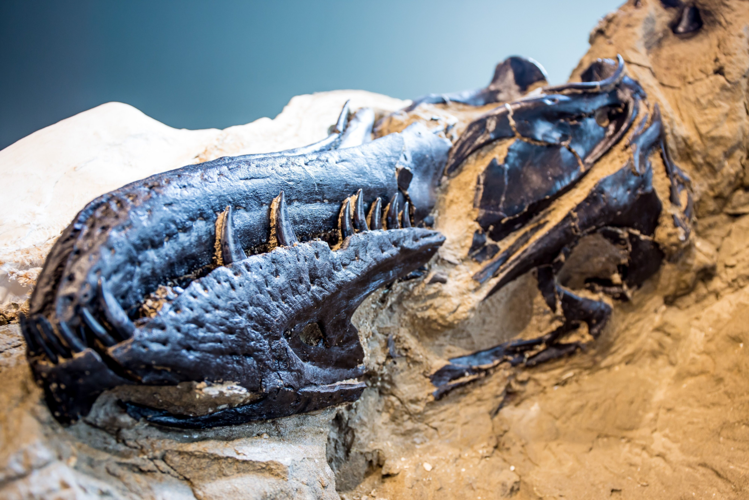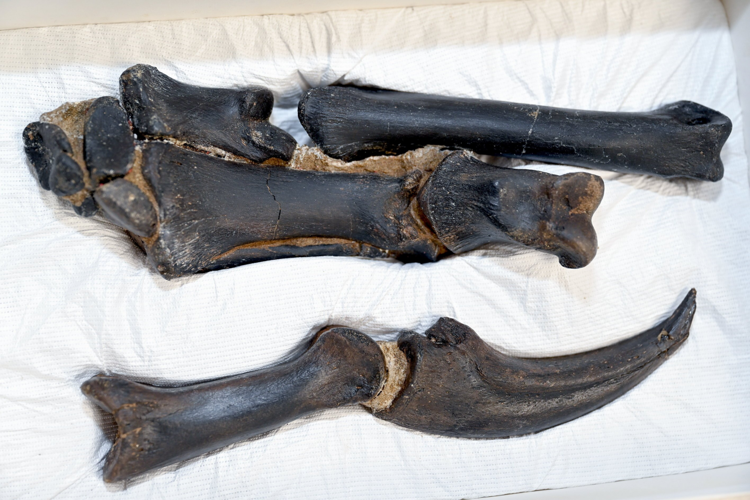
(Museum of Natural Sciences via SWNS)
By Stephen Beech
T. rex's story has been turned on its head by a new discovery about one of the world's most famous fossil finds.
One of the creatures locked in the “Duelling Dinosaurs” specimen is not a young T. rex but a rival predator, according to American scientists.
They say the breakthrough rewrites the story of the king of dinosaurs.
It has ended one of paleontology’s longest-running debates – whether Nanotyrannus is a distinct species, or just a teenage version of Tyrannosaurus rex.
The fossil - part of the “Dueling Dinosaurs” specimen unearthed in Montana - contains two species locked in prehistoric combat: a Triceratops and a small-bodied tyrannosaur.
That tyrannosaur has now been confirmed to be a fully grown Nanotyrannus lancensis – not a teenage T. rex, as many scientists once believed.
Study co-author Dr. Lindsay Zanno, of North Carolina State University, said: “This fossil doesn’t just settle the debate. It flips decades of T. rex research on its head.”
Using growth rings, spinal fusion data and developmental anatomy, the research team showed that the specimen was around 20-years-old and physically mature when it died.

(Museum of Natural Sciences via SWNS)
Its skeletal features – including larger forelimbs, more teeth, fewer tail vertebrae, and distinct skull nerve patterns – are features fixed early in development and biologically incompatible with T. rex.
Study co-author Dr. James Napoli, an anatomist at Stony Brook University, said: “For Nanotyrannus to be a juvenile T. rex, it would need to defy everything we know about vertebrate growth.
“It’s not just unlikely – it’s impossible.”
The implications are profound, according to the new study published in the journal Nature.
For years, paleontologists used Nanotyrannus fossils to model T. rex growth and behavior.
The new evidence reveals that those studies were based on two entirely different animals – and that multiple tyrannosaur species inhabited the same ecosystems in the final million years before the asteroid impact that wiped out most of the dinosaurs.
As part of their research, Dr. Zanno and Dr. Napoli examined more than 200 tyrannosaur fossils.

(N.C. State University via SWNS)
They discovered that one skeleton, formerly thought to represent a teenage T. rex, was slightly different than the Duelling Dinosaurs’ Nanotyrannus lancensis.
They named that fossil a new species of Nanotyrannus, dubbed N. lethaeus.
The name references the River Lethe from Greek mythology – a nod to how the species remained hidden in plain sight and “forgotten” for decades.
The researchers say that confirmation of the validity of Nanotyrannus means that predator diversity in the last million years of the Cretaceous was "much higher" than previously thought.
It also hints that other small-bodied dinosaur species might also be victims of mistaken identity.
Dr. Zanno said: “This discovery paints a richer, more competitive picture of the last days of the dinosaurs."
She added: “With enormous size, a powerful bite force and stereoscopic vision, T. rex was a formidable predator, but it did not reign uncontested.
"Darting alongside was Nanotyrannus – a leaner, swifter and more agile hunter.”























(0) comments
Welcome to the discussion.
Log In
Keep it Clean. Please avoid obscene, vulgar, lewd, racist or sexually-oriented language.
PLEASE TURN OFF YOUR CAPS LOCK.
Don't Threaten. Threats of harming another person will not be tolerated.
Be Truthful. Don't knowingly lie about anyone or anything.
Be Nice. No racism, sexism or any sort of -ism that is degrading to another person.
Be Proactive. Use the 'Report' link on each comment to let us know of abusive posts.
Share with Us. We'd love to hear eyewitness accounts, the history behind an article.